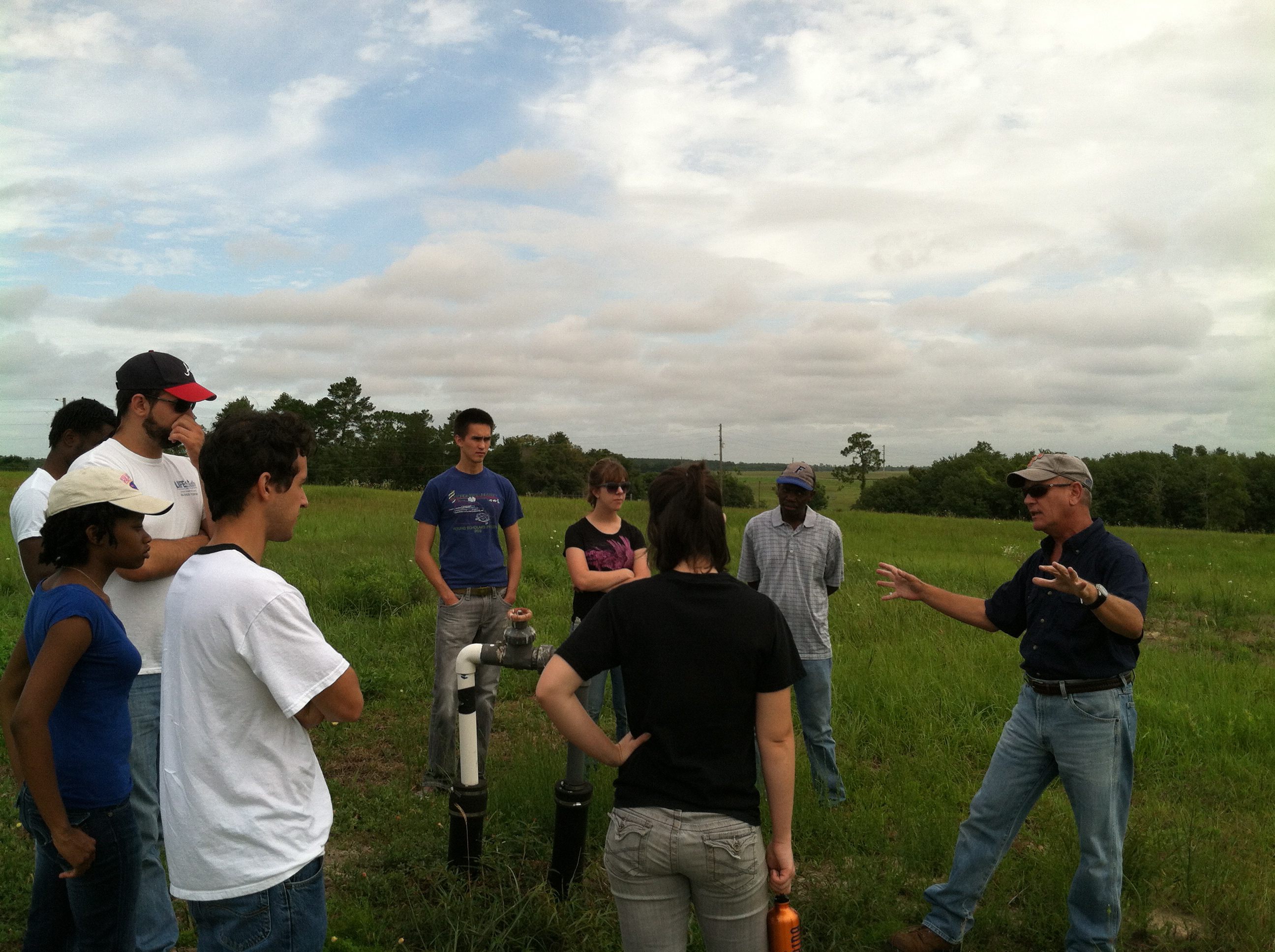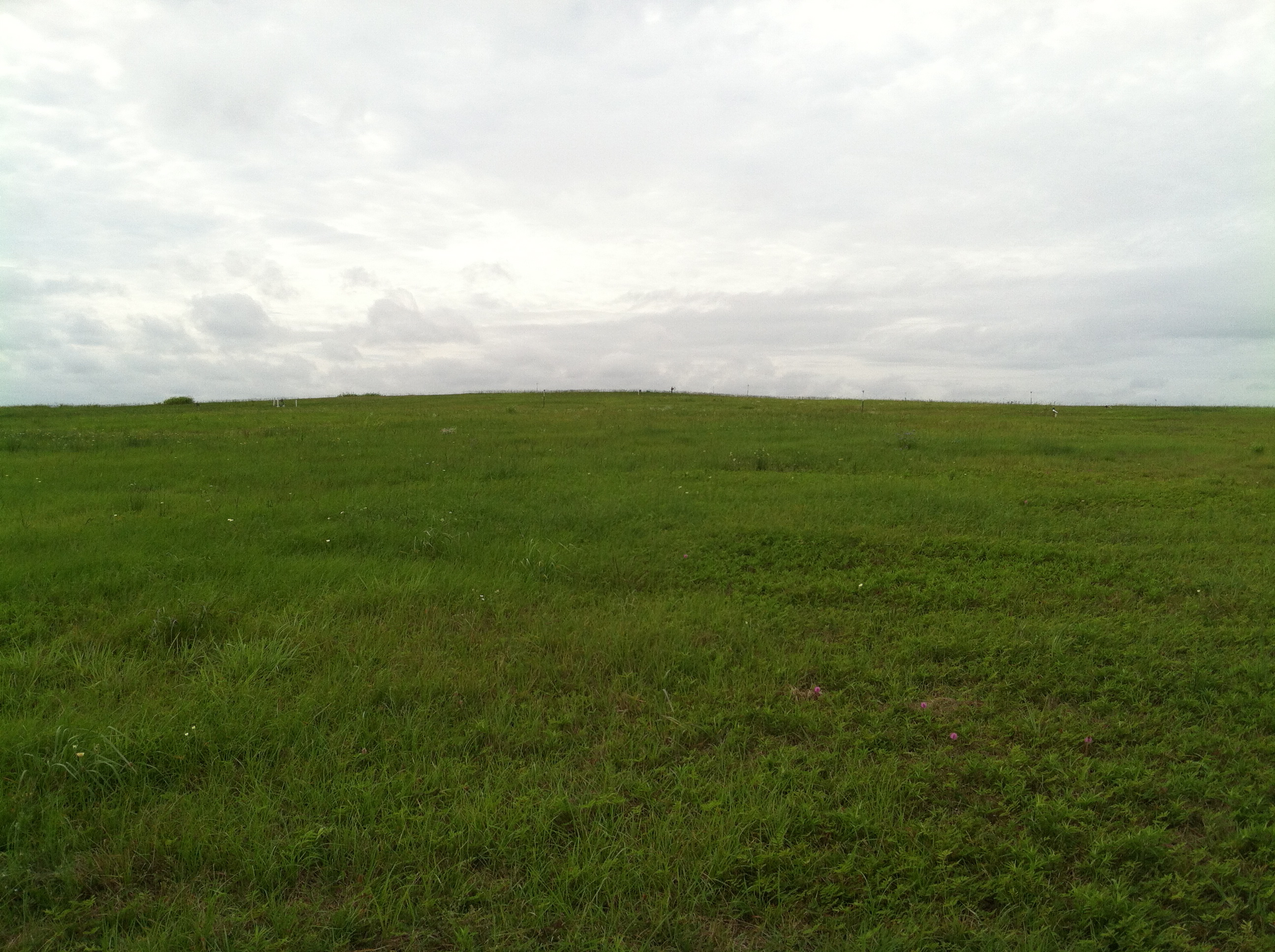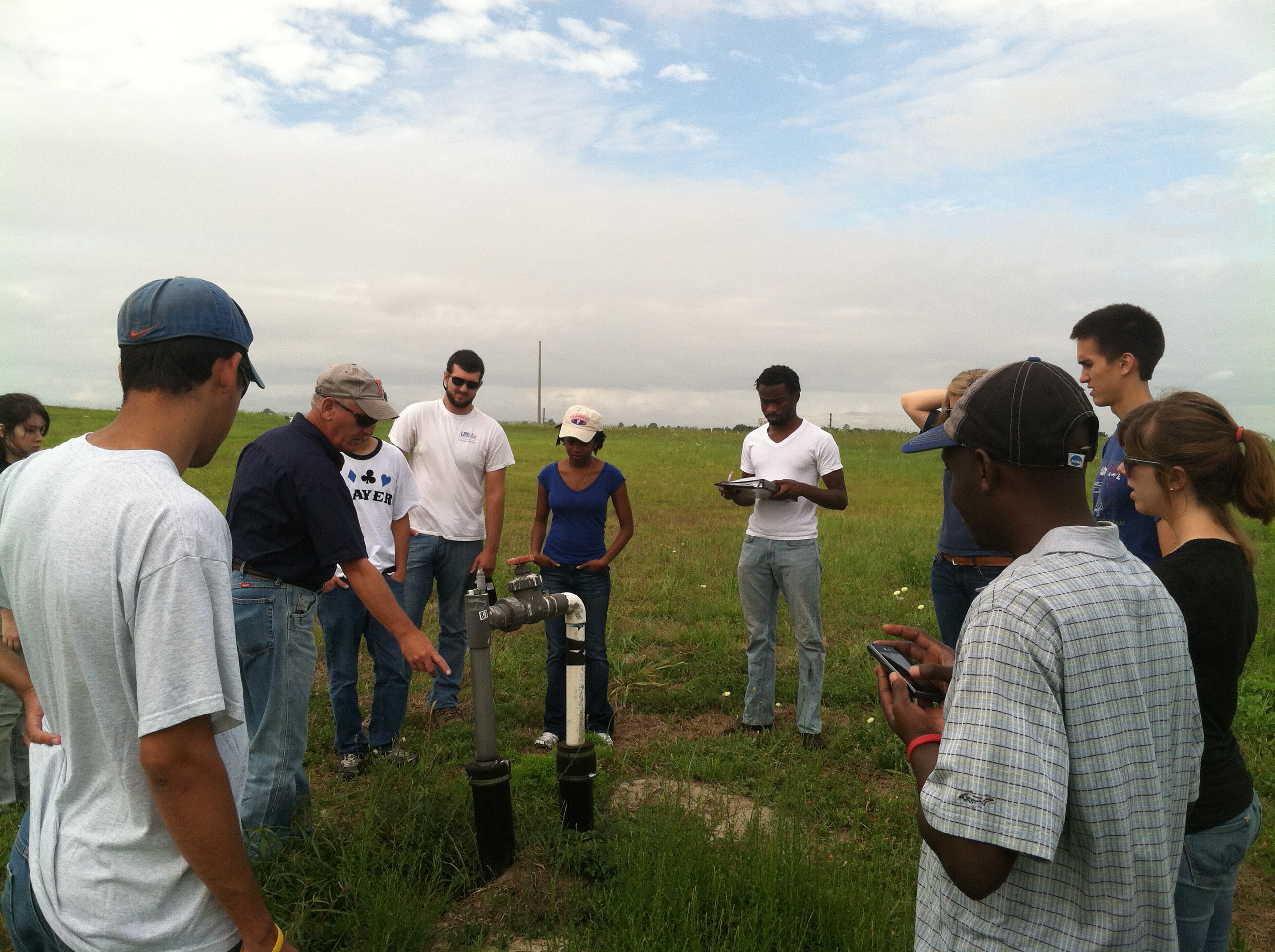Alachua County Southwest Landfill (Closed Landfill)
June 21, 2012
Archer, FL
Author: Jose St. Louis
Website

On June 21st, 2012 the BioEnergy and Sustainability School (BESS) interns visited the Southwest Archer landfill. Although this landfill is no longer actively accepting trash, the law states that closed landfills must be managed for thirty years after closing in order to regulate pollution. The BESS interns were introduced to some innovative management techniques that are being used at the Archer landfill. Ron Bishop, a solid waste engineer with Alachua County Public Works, provided the tour of the facility.

The main cell of the landfill covers about 28 acres, contains about 2.5 million tons of trash, and is over 135ft tall at its tallest point. Since such a large amount of trash in one location poses a contamination risk for the aquifer below, the bottom of the cell is lined with two membrane liners. The design calls for two layers so that there will be a secondary barrier in case the primary liner becomes compromised. The county landfill managers have to deal with large amounts of leachate. Leachate is a liquid created as water percolates down through trash, and extracts soluble compounds from the collected waste. This liquid is problematic because it can pollute both ground and surface waters. The liners at the bottom of the landfill, in effect, create a giant bathtub that fills with landfill leachate as water travels down through the garbage. Since the leachate must be removed from the system and treated before it can be discharged, many landfill operations choose to simply pump out the leachate and truck it to a wastewater treatment plant. Over time however, this management practice proves to be costly and wasteful. In addition to this, hauling the leachate leads to uncertain operational costs because wastewater treatment plants can change their pricing over time. In order to increase operational security, the team managing the Archer landfill is investigating alternatives to hauling landfill leachate.

The team is exploring cleaning landfill leachate using a reverse osmosis (RO) filter. Although, reverse osmosis systems have been widely used in order to create potable water, their ability to clean landfill leachate has, however, yet to be fully explored. Filtering landfill leachate through a reverse osmosis system reduces the contaminant concentrations enough to safely discharge the liquid into the environment. However, for every gallon of permeate (clean leachate) that is produced, the RO system also produces four gallons of concentrated solution that is re-circulated back into the landfill. In addition to this, operating a reverse osmosis system can be costly and energy intensive. In order to help combat these issues, the Archer landfill has teamed with the BEST lab in order to explore the feasibility of a combined reverse osmosis/algal remediation system. Algal remediation involves utilizing algae to remove nutrients and contaminants from water. Although algal remediation takes much longer than reverse osmosis filtration, it is much less energy intensive and does not produce any concentrated leachate. In addition to this, algal remediation has the added benefit of consuming carbon dioxide and releasing oxygen into the atmosphere. The team working on this project wishes to create a system that combines the advantages of both remediation techniques, while minimizing operational and environmental costs.
For a society, centralizing all of your garbage in one location makes sense. However, since all we have to do is put trash on the curb to get rid of it, many people seem to forget that their trash actually exists after it has left their possession. The Archer landfill is just one of the thousands of landfills that are located across America, and every single one of them is a possible source of pollution. Even though it closed 14 years ago it will still have to be managed for another 16+ years in order to ensure that does not pollute the environment. The ongoing management operations at the Archer landfill are an excellent example of why it is important to reduce, reuse, and recycle!